India’s Missing Middle: 24,000 ‘Villages’ With Populations Greater Than Towns Lose Out On Policies For Urban Areas
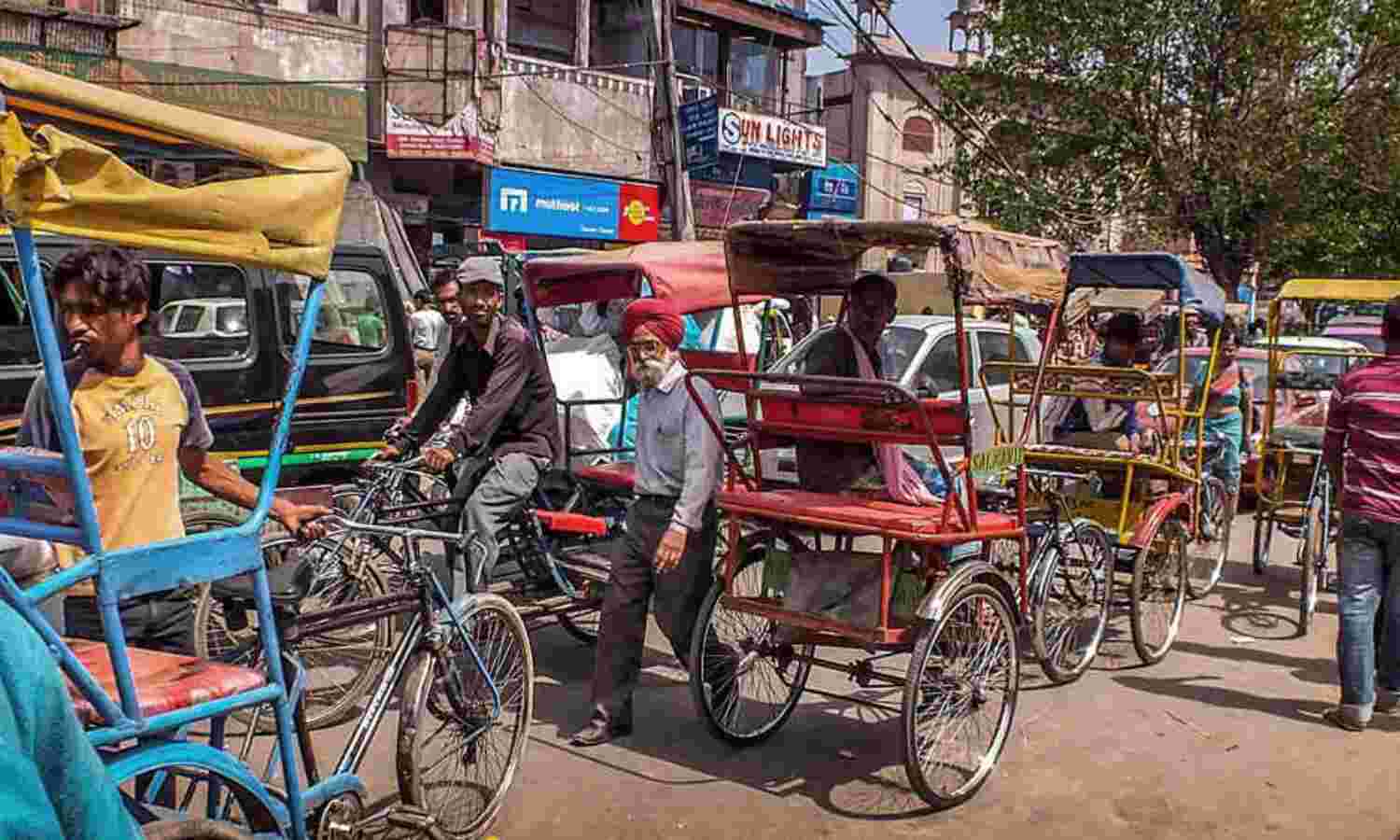
Bengaluru: The village of Rarhi in north Bihar’s Darbhanga district has a population of over 36,000, with 7,500 households according to the last Census in 2011. That’s more than Adoor in Kerala, which is classified three steps above in the size hierarchy as a class 3 town with a population close to 29,000.
Rarhi is one of 24,000 such settlements in India with populations larger than towns (a town has a minimum population of 5,000 according to census criteria), but are not classified as urban because less than 75% of the male working population is engaged in non-agricultural work.
A few other villages in Darbhanga, such as Barhampur and Ahiari, have a population of more than 10,000, and several others over 5,000 but are not classed as urban, despite meeting the population and density criteria. Such rigid, outdated classifications can have planning and development implications.
These ‘grey’ settlements, considered rural and classified as ‘large’ and ‘very large’ villages in Census 2011, are home to around 190 million people. This means more than 10% of India’s population could be missing out on infrastructure, housing or employment policies that target the ‘urban’ population, an analysis by the Indian Institute for Human Settlements (IIHS) in Bengaluru shows.
India could thus be considered more urban than official estimates show if different definitions were used. The face of ‘urban India’ would change if these settlements were considered ‘potentially urban’ and reclassified. These ‘grey’ settlements could even be future hubs of manufacturing and service industries.
Urban policy fails to keep pace with India’s urban transition
IIHS analysed data of all the 600,000 urban and rural settlements from Census 2011 and visualised these trends using graphs and maps in the book, Urban India 2015: Evidence. Some key trends emerged: High density clusters had formed in the neighbourhood of established urban centres; urban settlements in the southern and western regions had increased; and settlements with populations of less than 1,000 had decreased, accompanied by an increase in settlements with populations between 5,000 and 20,000 over the last three decades.
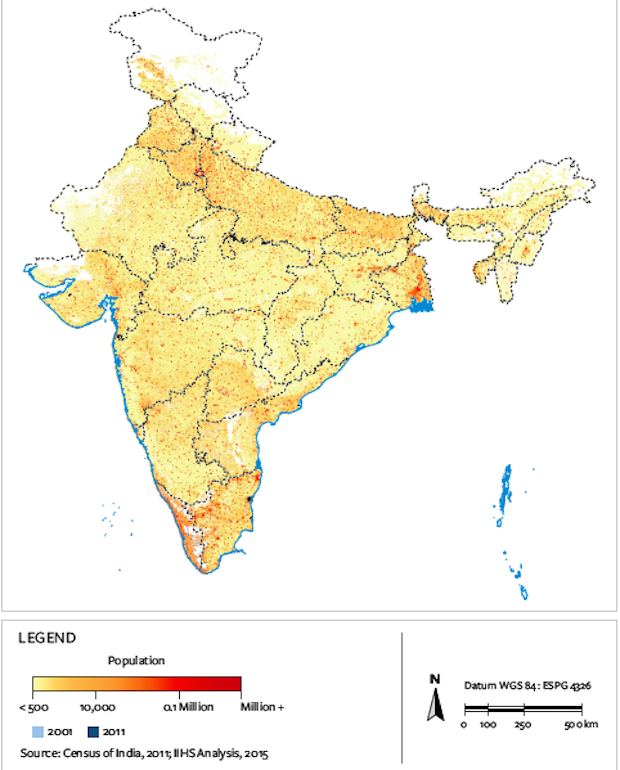
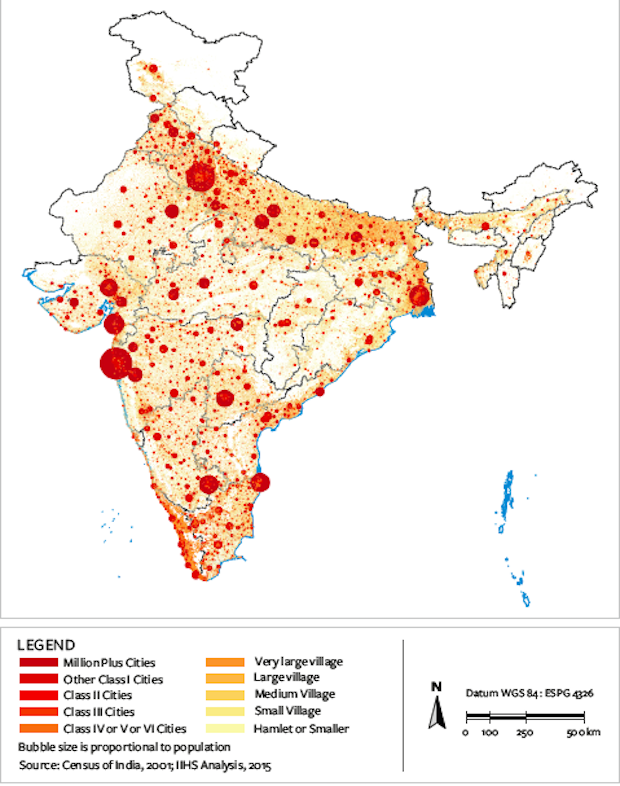
Sources: Census 2011 and Indian Institute for Human Settlements’ ‘Urban India 2015: Evidence’
Note: Distribution of settlements is based on Census criteria, ranging from rural hamlets to cities with million-plus populations.
In the decades between Independence and Census 2011, an urban transition of sorts took place. While hamlets and small villages had housed 43% of the population in 1950, they were home to just 12% of the population in 2011. Around 24,000 settlements were now classified as ‘large’ and ‘very large villages’, where around 190 million persons--more than 10% of India’s population--lived.
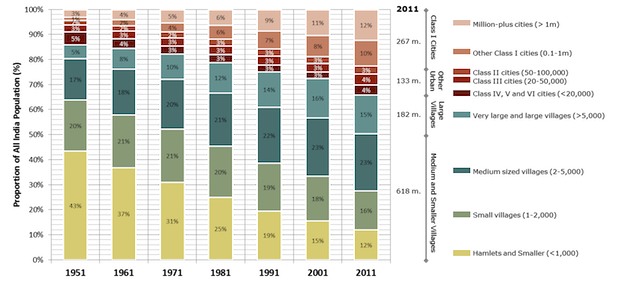
Source: Indian Institute for Human Settlements’ ‘Urban India 2015: Evidence’
These trends indicate an urbanisation distinct from the standard narrative that tends to focus on larger cities where a majority of the urban population lives, and which considers certain states like Tamil Nadu, Gujarat and Maharashtra as more urbanised. The high-density clusters mentioned above exist across states, around established urban centres, and have strong links to the economic and social development of these centres. But they continue to be classified as rural despite exhibiting these urban characteristics because of the strictly dichotomous definition of ‘rural’ and ‘urban’ in India.
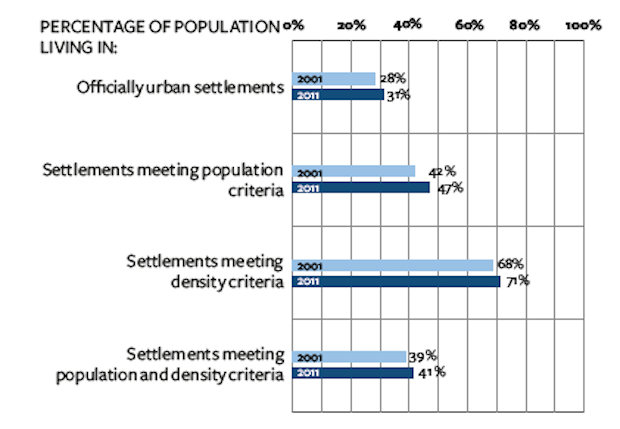
Sources: Census 2011 and Indian Institute for Human Settlements’ ‘Urban India 2015: Evidence’
For instance, Bihar currently accounts for only 2% of settlements classified as ‘towns’ and tends to be considered largely a rural state. But if the large and very large villages of Bihar are considered ‘potentially urban’, the state will have the highest proportion of towns in India, at 18%, followed by Uttar Pradesh and Andhra Pradesh.
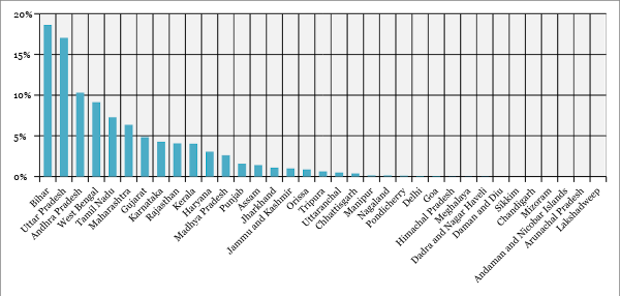
Source: ‘Visualising the Grey Area between Rural and Urban India’ by Arindam Jana, The Administrator, Volume 56, 2015
Uniqueness of Indian definitions: What constitutes urban India?
Census 2011 classified one-third of India as urban using the following criteria: All places with a municipality, corporation, cantonment board or notified town area committee. All other places with a minimum population of 5,000, at least 75% of the male working population engaged in non-agricultural pursuits, and a population density of at least 400 persons per sq km, were categorised as ‘census towns’.
A settlement can become a town in two ways: If it satisfies the defined criteria, it becomes a ‘census town’; if it is notified by the government as a town, it becomes a ‘statutory town’. All statutory towns therefore need not be census towns that meet all the urban criteria. ‘Villages’ don’t have a particular definition, and settlements not meeting the criteria for towns are assumed to be villages. Towns and villages are further broken down into sub-categories based on their population size.
As the table below indicates, population size is often the same in towns and villages, and the deciding criterion for classification is the composition of the labour force.
| Size Classification Of Towns & Villages | |||
|---|---|---|---|
| Towns | Villages | ||
| Classification | Population Range | Classification | Population Range |
| Class I | >100,000 | Very Large Villages | >10,000 |
| Class II | >50,000 and <100,000 | Large Villages | >5,000 and <10,000 |
| Class III | >20,000 and <50,000 | Medium-sized Villages | >2,000 and <5,000 |
| Class IV | >10,000 and <20,000 | Small Villages | >1,000 and <2,000 |
| Class V | >5,000 and <10,000 | Hamlets | >500 and <1,000 |
| Class VI | <5,000 | Small Hamlets | <500 |
Sources: Census 2011 and ‘Visualising the Grey Area between Rural and Urban India’ by Arindam Jana, The Administrator, Volume 56, 2015
Some scholars have attempted to redefine or extend the definition of the 'urban' in India, by counting as urban those settlements that are officially classified as rural but fall within peri-urban areas of larger cities. While this is important, it is also crucial to understand the inherent implications of current definitions.
In the decades after Independence up to 2011, as the urban population increased, the rural population decreased, reflecting the economic transition in this period--when India evolved from a rural-based, agrarian economy to a more urban-based, industrial and services-led economy. The implications of this rural-urban transition continue to be the gravest for these ‘large’ and ‘very large’ villages which have urban characteristics, but have not been able to make the labour market transition. If these ‘potentially urban’ grey settlements are to transition into ‘urban’ areas, they need employment generation in formal non-agricultural sectors.
Distribution of the ‘potentially urban’
These ‘large villages’ are present in very high numbers in the Gangetic plains, and the southern coastal and delta regions.
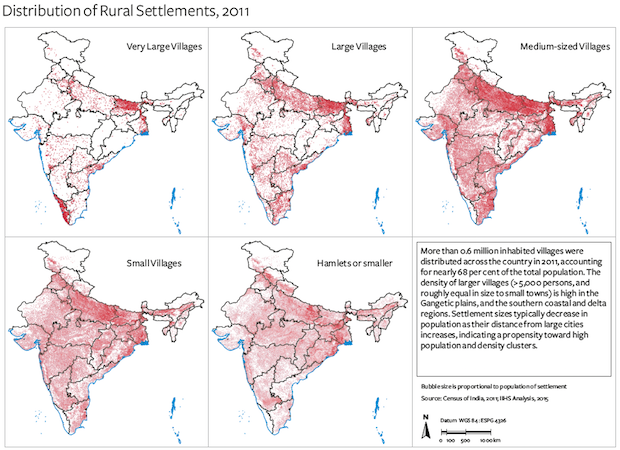
Source: Indian Institute for Human Settlements’ ‘Urban India 2015: Evidence’
The distribution of these ‘villages’ also shows significant variation across states, bringing out the importance of regionally aggregated data, which can be masked in national averages.
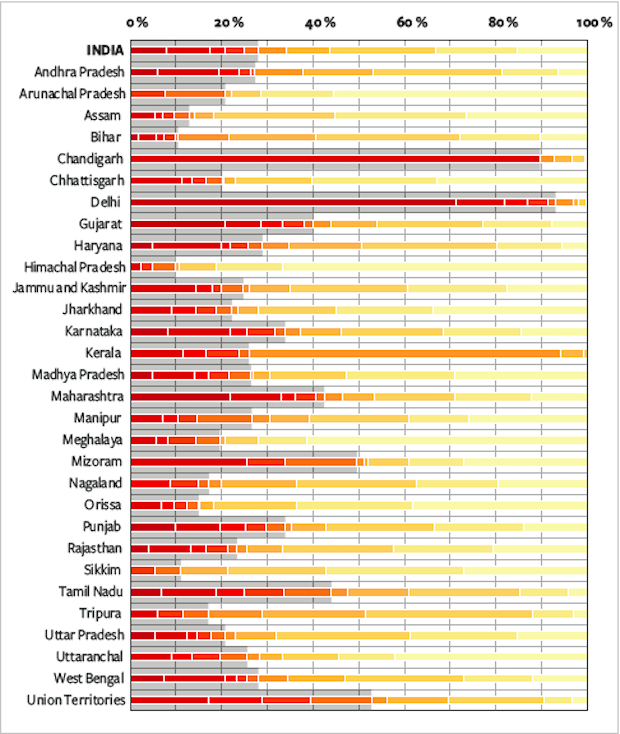

Source: Indian Institute for Human Settlements’ ‘Urban India 2015: Evidence’
When the two states of Maharashtra and Tamil Nadu are compared, Tamil Nadu accounts for the largest proportion of ‘towns’, while Maharashtra accounts for the largest proportion of ‘urban populations’.
Although Maharashtra accounted for only 6.5% of the country’s towns, it housed nearly 12% of the country’s urban population (around 54,000 persons per town, on average). Tamil Nadu, on the other hand, had nearly 14% of all towns in India but housed 8% of the total urban population (about 6,300 persons per town, on average). So in Maharashtra, people are distributed in a smaller number of large towns, while in Tamil Nadu they are distributed in a larger number of small towns.
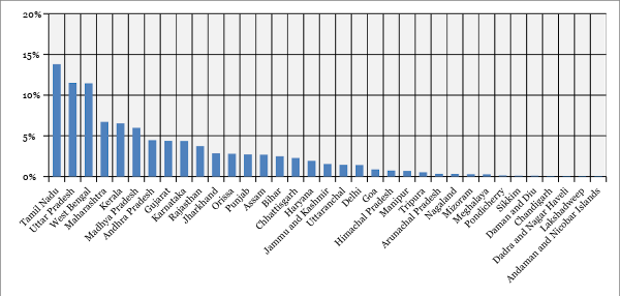
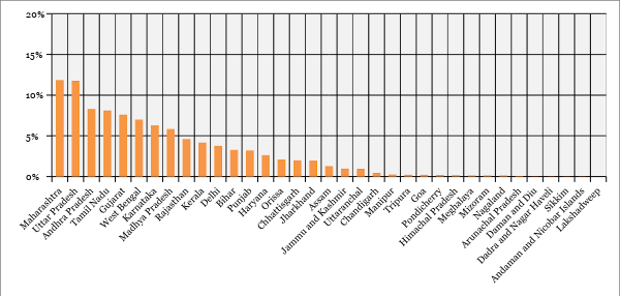
Sources: Census 2011 and ‘Visualising the Grey Area between Rural and Urban India’ by Arindam Jana, The Administrator, Volume 56, 2015
These demographics will play a key role in assessing what sorts of policies these states need, as the reassessment of certain parameters leads to a massive restructuring of the quantitative and spatial distribution of populations.
In the case of Bihar, for instance, there could be enormous implications for allocating resources for employment generation since there is currently no urban counterpart to the Mahatma Gandhi National Rural Employment Guarantee Scheme (MGNREGS). For future policies, should allocation be prioritised to existing urbanised states, or to states with upcoming urban centres? Targeting the latter would create opportunities to transition from the primary sector of the economy into secondary and tertiary sectors. These areas may not have been considered in programmes such as the erstwhile Jawaharlal Nehru National Urban Renewal Mission that focused on ‘cities’. At the same time, it is not clear whether they were considered for rural-focused programmes such as the MGNREGS.
It may not be feasible or necessary for every state or region to be highly urbanised. Nevertheless, it is important to plan for alternative models, with an increased focus on agricultural employment and output in these regions. Either way, we need to move beyond the standard narrative of extreme concentration in megacities and understand the nuances of India’s urbanisation. This will allow us to frame suitable policies that save these ‘potentially urban settlements’ from developing the same problems that megacities face.
Correction: The story has been updated to reflect that 24,000 settlements in India with populations larger than towns are not classified as urban because less than 75% of the male working population--and not 25%, as we said earlier--is engaged in non-agricultural work. We regret the error.
This article is adapted from the Indian Institute of Human Settlements’ publication Urban India 2015: Evidence, and the report ‘Visualising the Grey Area between Rural and Urban India’ by Arindam Jana, The Administrator, 2015, the journal of the Lal Bahadur Shastri National Academy of Administration.
(Arindam Jana works on urban data analytics at the Indian Institute of Human Settlements, Bengaluru. Archita S is an External Consultant with the Indian Institute of Human Settlements, Bengaluru, and writes on cities and urban issues. )
We welcome feedback. Please write to respond@indiaspend.org. We reserve the right to edit responses for language and grammar.


